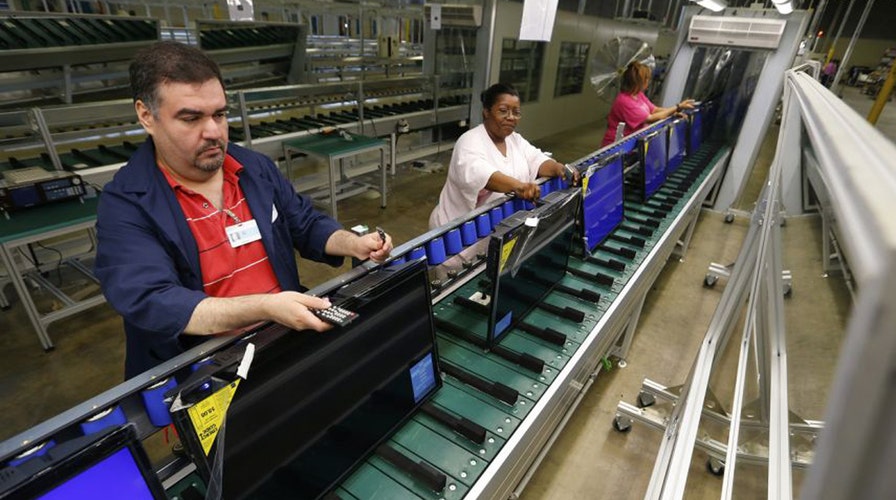The U.S. Bureau of Labor Statistics released its monthly Employment Situation Summary Friday at 8:30 a.m. Eastern Time. Here’s the first paragraph, with a bit of editing on my part:
Blah blah blah Total nonfarm payroll employment increased by blah blah blah 271,000 in October, and the unemployment blah blah blah rate was essentially unchanged blah blah blah at 5.0 percent, the U.S. blah blah blah Bureau of Labor Statistics reported today. Blah blah blah Job gains occurred in professional blah blah blah and business services, health care, retail trade, blah blah blah food services and drinking places, and blah blah blah construction blah blah blah blah blah.
So once again, the monthly “Job Report” came out and the media did what the media always does: Regurgitate the press release and recite the numbers – the same old blah blah blah – without providing so much as a shred of context. Prior to the report , economists predicted a number less than 271,000, so the media dutifully reported that the number of new jobs beat the forecast. GOOD NEWS!!!
Now you can panic. The formula establishes that we need to average 1.67 million jobs per month to offset the half of the $500 billion deficit that must be raised through income taxes.
That’s how it goes these days when it comes to economic news. The talking heads don’t understand any of it, so they just say the economy added blah blah blah jobs, and we, the people, nod our heads in approval. Jobs up, HOORAY! That’s all we need to know.
Well, not really all. Let’s dig a little deeper. Let’s put the “good” news into a framework that helps us understand what it all means.
Now pay attention, because here’s the key point you need to know about the monthly jobs report, the one the media doesn’t tell you, because the general media doesn’t get it:
America’s annual deficit – $500 billion this year, give or take a couple of billion – is bleeding uncontrollably. And it’s the annual deficit that dictates how many jobs the country needs to add each month. The number of jobs required is dictated by the size of our deficit.
Read that over a few times and keep it in mind, because now we’re going to figure out how many new full-time jobs we really need to overcome the deficit. And you can put away your calculator. It’s pretty easy arithmetic.
First of all, you need to know that half of America’s tax revenue – the money the country needs to stay afloat – comes from federal income taxes. So to overcome the deficit, no matter its size, we need to collect half our new money from the federal income taxes that will be paid by people who weren’t contributing before: the people in new jobs.
And that means:
• America’s deficit stands at $500 billion this year. Since half of the money we need to eradicate that will have to come from federal income taxes derived from new jobs ...
• That means we need $250 billion from federal income taxes.
And we can’t come even close to that, because:
• The average full-time job pays $50,000.
• At a 25 percent federal income tax rate, each new full-time job will put $12,500 – one-quarter of $50,000 – into America’s bank account.
Let’s recap quickly: We need $250 billion (half the $500 billion deficit) in new income tax payments, and we’ll be collecting $12,500 from each new job.
Now, let’s do the math …
250 billion ÷ 12,500 = 20 million
That means we need to add 20 million new jobs this year to overcome the deficit. But there’s no need to panic, because that’s $20 million in a year. The monthly figure is much lower:
20 million ÷ 12 = 1,666,666
OK, now you can panic. The formula establishes that we need to average 1.67 million jobs per month to offset the half of the $500 billion deficit that must be raised through income taxes.
No problem, except we’ve been averaging only 209,000 new jobs per month this year – and the year is almost over. And get this: Half of those jobs are part-time. So our 209,000 jobs really add up to 105,000. We need to add 1,666,666 full-time jobs each month, and we’re actually adding only 105,000. That’s just 6 percent of what we need to pay our country’s bills. And If we can’t make up the other 94 percent, we’ll have to add the shortfall to the national debt.
This jobs report released today , came with all the same fanfare as many of the previous ones.. Blah blah blah.
Just don’t believe it. Because this “good” news has to be seen through a lens that shows not only how many new jobs have been added, but how many more new jobs needed to be added to offset our spending. We need to deal with the deficit, because failing to do so just adds to our national debt.

